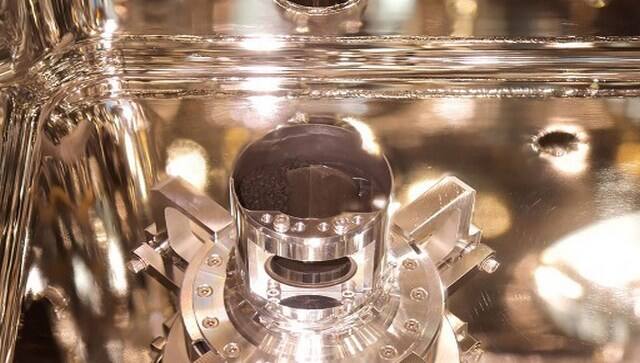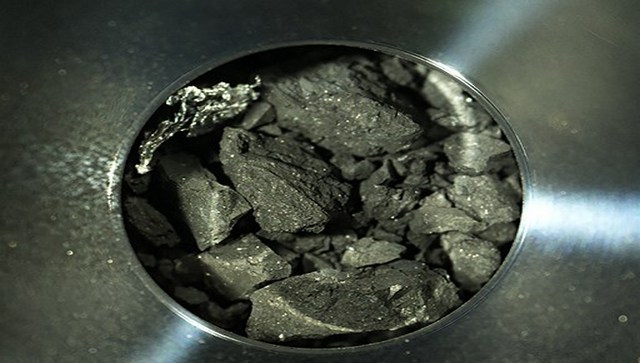How did the Earth become this big, blue planet? Humans have been pondering that question for ages. Now, scientists are saying water – which is so essential to human life – may have been brought to Earth by asteroids from the outer edges of the solar system. This, after examining rare samples collected on a six-year Japanese space mission. Studies on the material are beginning to be published, and in June, one group of researchers said they had found organic material which showed that some of the building blocks of life on Earth, amino acids, may have been formed in space. Researchers are scrutinising material brought back to Earth in 2020 from the asteroid Ryugu by Japanese space probe Hayabusa-2. Let’s take a closer look at what the study suggests: The mission Hayabusa-2 was launched in 2014 on its mission to Ryugu, around 300 million kilometres away. The Hayabusa-2, around the size of a refrigerator landed on the diamond-shaped asteroid Ryugu, which means “dragon palace” in Japanese, as per Phys.org. The probe collected the material – 5.4 grams (0.2 ounces) of rocks and dust – by firing an “impactor” into its surface. It returned to Earth’s orbit two years ago to drop off a capsule containing the sample. CBS news reported that when the capsule descended to Earth in 2020, it put on a spectacular spectacle above the Australian outback, racing across the sky as a bright fireball. As per Indian Express, Hayabasu2’s predecessor, the Hayabusa mission, brought back samples from the asteroid Itokawa in 2010. What does the study say? In a new paper published in the journal Nature Astronomy, scientists said the Ryugu samples could give clues to the mystery of how oceans appeared on Earth billions of years ago. “Volatile and organic-rich C-type asteroids may have been one of the main sources of Earth’s water,” said the study by scientists from Japan and other countries, published Monday. “The delivery of volatiles (that is, organics and water) to the Earth is still a subject of notable debate,” it said.
But the organic materials found “in Ryugu particles, identified in this study, probably represent one important source of volatiles”.
The scientists hypothesised that such material probably has an “outer Solar System origin”, but said it was “unlikely to be the only source of volatiles delivered to the early Earth”. As per Indiatimes, the samples contained 20 distinct types of amino acids, a key component for all living things, which scientists don’t quite understand came to the Earth. Indiatimes quoted Kensei Kobayashi, professor emeritus of astrobiology at Yokohama National University as saying that the fact that amino acids were found on an extra-terrestrial body hints at life outside Earth. [caption id=“attachment_11076701” align=“alignnone” width=“640”]  samples of surface dust and pristine material collected from the asteroid Ryugu by the Hayabusa-2 space probe. AFP[/caption] “Proving amino acids exist in the subsurface of asteroids increases the likelihood that the compounds arrived on Earth from space. It also means amino acids can likely be found on other planets and natural satellites, hinting that life could have been born in more places in the universe than previously thought,” Kobayashi added. As per Kyodo News, while the composition of particles collected from Ryugu closely matches water on Earth, the study notes there were slight differences. That has led scientists to hypothesise that our planet’s water might have also originated from places other than asteroids, as reported by Kyodo News. “In a broad sense, it is possible that small celestial bodies brought things that led to water and life on Earth,” Motoo Ito, a senior researcher of geomaterials science at the Japan Agency for Marine-Earth Science and Technology was quoted as saying by the agency. In the Nature Astronomy study, the researchers again hailed the findings made possible by the mission. “Ryugu particles are undoubtedly among the most uncontaminated Solar System materials available for laboratory study and ongoing investigations of these precious samples will certainly expand our understanding of early Solar System processes,” the study said. As per CBS, the NASA OSIRIS-REx mission collected a sample from another near-Earth asteroid — Bennu, which is similar to Ryugu. The sample will return to Earth in 2023. With inputs from agencies Read all the Latest News , Trending News , Cricket News , Bollywood News , India News and Entertainment News here. Follow us on Facebook, Twitter and Instagram.


)

)
)
)
)
)
)
)
)



